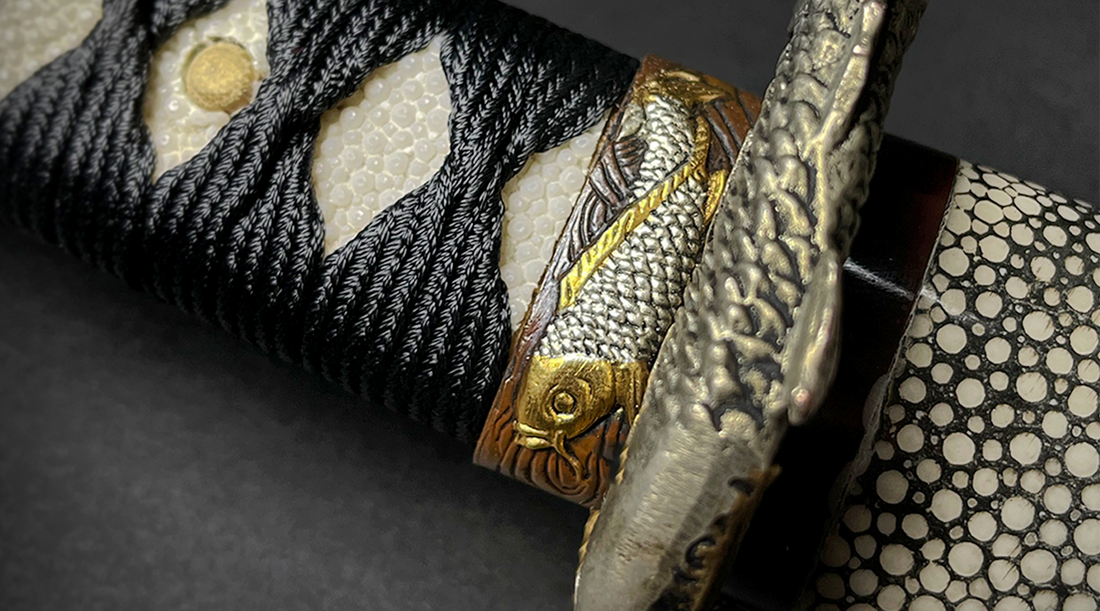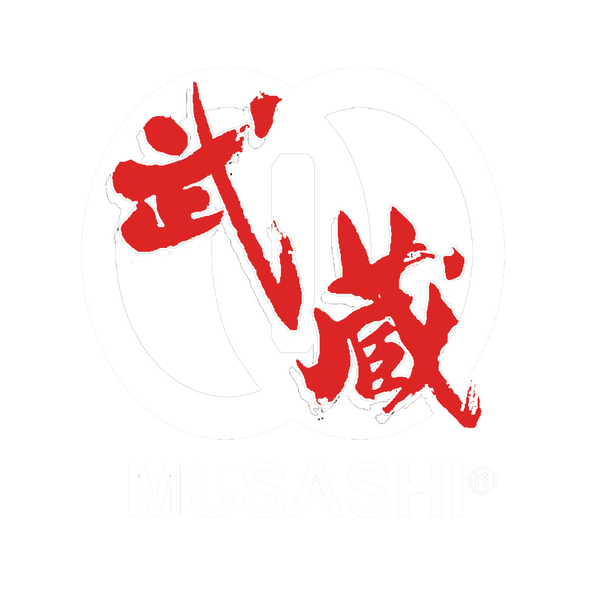
I've always been captivated by the allure of katanas. These iconic Japanese swords have a rich historical significance that transcends their function as weapons. The katana, with its distinctive curved blade and exceptional craftsmanship, holds a unique place in both martial arts and cultural heritage.
Delving into the past, one can uncover the fascinating journey of the katana. Its evolution is intertwined with the samurai, embodying the spirit and honor of these revered warriors. The katana is not merely a weapon; it is a symbol of tradition, loyalty, and the artistry of Japanese swordsmiths.
The elegance of the katana is a testament to the meticulous craftsmanship invested in its creation. The curve of the blade, the ornate handguard, and the carefully wrapped hilt all contribute to its aesthetic appeal. Beyond its utilitarian purpose, the katana is a work of art, a masterpiece that reflects the cultural and artistic sensibilities of its time.
In this exploration of the katana, we will unravel its mystique, appreciating not only its historical significance but also the poetry of its design. Join me on this journey as we delve into the world of the katana, where history, art, and martial prowess converge in a blade that has stood the test of time.
Unveiling the Origin
The katana, an iconic symbol of Japanese culture and martial heritage, has a storied past that is as fascinating as the blade. Tracing its roots, the katana evolved from the Tachi sword, a weapon that held sway during the Heian period. The Tachi was designed primarily for cavalry engagements, characterized by its distinct curvature and the way it was worn with the blade facing downward, a feature that facilitated quick draw and strike movements from horseback.
This curved blade was not just a functional necessity but a work of art, embodying the prowess and honor of the samurai who wielded it. The transition from Tachi to katana involved changes in blade length and curvature, adapting to the evolving combat styles of the samurai. The katana became more conducive to foot-soldier combat, its design optimised for speed, precision, and effectiveness in close-quarter battles.
As we unravel the layers of history, we will explore the social, cultural, and martial contexts that shaped the katana into the iconic weapon we recognize today. Join me on this journey through time, where craftsmanship, warfare, and tradition converge to give birth to the legendary katana.
Anatomy of a Katana
The anatomy of a katana reveals a complex interplay of form and function, where every aspect of its design serves a purpose. A katana's soul lies in its blade, characterized by different "Hamons" or temper lines. These Hamons are not merely decorative; they are the visible result of the differential hardening process, a sophisticated method that imparts the blade with both a razor-sharp edge and a flexible spine. The beauty of these Hamons lies in their variety – from straight lines to intricate patterns, each pattern is as unique as a fingerprint and reflects the swordsmith's skill and style.
Beyond the Hamons, the katana is renowned for its layered steel structure. The traditional method of folding and forging the steel creates multiple layers, enhancing the blade's strength and resilience. This process, combined with the use of different types of steel, results in a blade that is both hard and flexible, capable of withstanding considerable stress while maintaining a sharp edge.
Our collection offers a range of steel types for katanas, including 160 Carbon Steel Blades, 145 Carbon Steel Blades, and T10 Carbon Steel. Each type of steel offers unique properties. For instance, 160 Carbon Steel Blades are known for their hardness and durability, making them ideal for heavy-duty use. On the other hand, the 145 Carbon Steel Blades offer a balance of toughness and flexibility, suitable for various martial arts applications. T10 Carbon Steel is renowned for its high carbon content, leading to superior edge retention and sharpness, a choice for those seeking a blade that embodies the traditional virtues of a samurai sword.
Katana Beyond the Blade
Crafting a Katana beyond the blade involves a meticulous process that extends to every detail, starting with the handle and hilt.
In the realm of handle and hilt craftsmanship, the choice of materials plays a pivotal role. Masters often select high-quality hardwoods, like tsuge or magnolia, for the core, ensuring durability and a solid foundation. The meticulously shaped and carved outer layer may consist of rayskin, providing a textured and visually appealing surface.
As for the tsuka-maki, or handle wrapping, a spectrum of styles emerges, each reflecting the artisan's skill and the owner's taste. I have observed the traditional battle wrap, the katate-maki, where the cord is densely wrapped in a spiral pattern. Conversely, the more decorative and elaborate katate-maki showcases intricate patterns, adding visual flair and a comfortable grip.
Moving on to the guard and pommel variations, these components exhibit ornamental designs and functional considerations. Artisans often incorporate symbolic motifs and family crests into the guard's design, making each katana a unique representation of the owner's identity. Simultaneously, the pommel serves both aesthetic and practical purposes. Some pommels are weighted for balance, enhancing the overall handling of the katana, while others showcase intricate carvings, contributing to the sword's overall beauty.
In essence, crafting a Katana extends well beyond the blade, delving into the artistry and functionality of every component. Each element, from the choice of materials to the intricate details of wrapping and ornamentation, contributes to the creation of a truly exceptional and personalized masterpiece.
Myths and Realities
Dispelling common misconceptions about katanas
In the world of blades, katanas often carry a mystique that isn't always grounded in truth. One common misconception is the belief that katanas can easily cut through anything. While they are undoubtedly sharp, the exaggerated claims of effortlessly slicing through steel may be more fiction than reality. Understanding the true capabilities of katanas can help demystify these misconceptions.
Hollywood vs. reality: How katanas are portrayed in media
Hollywood has a penchant for embellishing the prowess of katanas, portraying them as ultimate weapons with supernatural cutting abilities. The reality, however, is less cinematic. Katanas are exceptional cutting tools but require skill and technique for effective use. The flashy choreography in movies often deviates from the practicalities of wielding a katana in real-life combat.
Addressing the supernatural beliefs around certain katanas
Some katanas are shrouded in supernatural beliefs, with legends suggesting they possess mystical powers or are cursed. Separating fact from fiction, it's essential to recognize that the true value of a katana lies in its craftsmanship and the skills of its wielder. While historical and cultural significance abound, attributing magical properties to these swords ventures into the realm of myth rather than reality.
By dispelling these misconceptions and acknowledging the disparity between Hollywood portrayals and actual use, we gain a more grounded understanding of the katana's place in history and martial arts.
Choosing the Perfect Katana
When selecting the ideal katana, there are crucial aspects to ponder. Firstly, one must determine the purpose behind the purchase. Whether intended for display purposes or for active use in martial arts, this decision significantly influences the type of katana one should acquire.
Equally important are budget considerations. Establishing a clear budget framework helps narrow options and ensures that the chosen katana aligns with financial constraints. By carefully weighing these factors, one can make a well-informed decision and acquire the perfect katana for their specific needs and preferences.
Conclusion
I sincerely hope this exploration has ignited your curiosity and provided valuable insights. As I reflect on our journey together, it's clear there is so much more to discover. The world is brimming with opportunities for exploration, and I encourage you to delve even deeper into the realms we've touched upon.
Remember, the joy of discovery knows no bounds. Further exploration will enrich your understanding and open doors to new and exciting possibilities. As you contemplate the path ahead, consider the potential for growth and the countless avenues awaiting your exploration.


